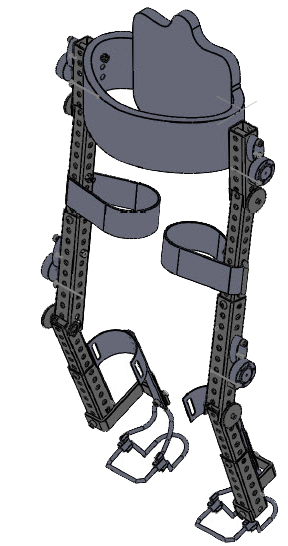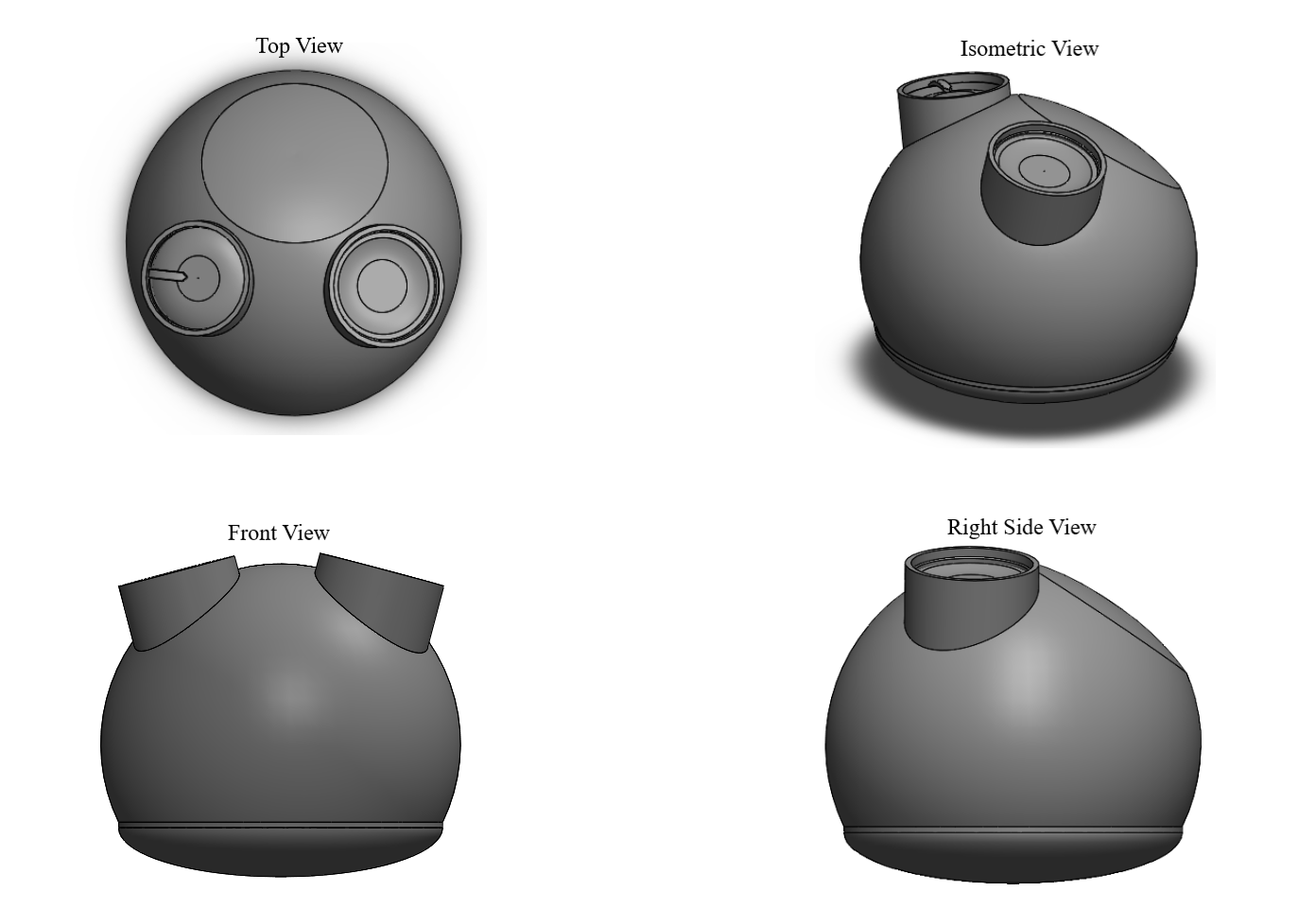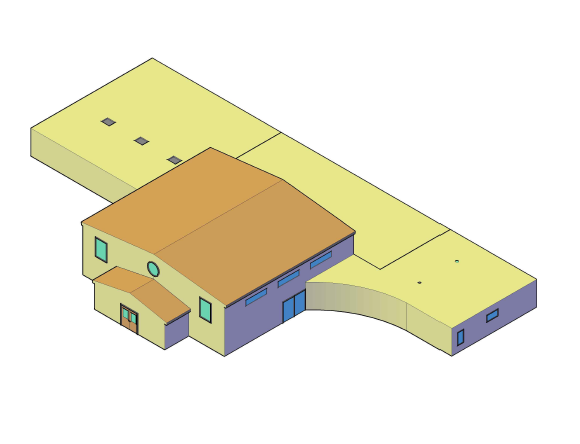As senior engineering students enter the home stretch of their education at The University of Akron, they participate in a capstone project, also called Senior Design. The details vary from department to department, but all students design and develop solutions to engineering problems. In addition to the technical work, senior design typically includes activities such as writing technical reports and presenting designs in formal presentations and demonstrations. On Engineering Design Day, a yearly event in the Student Union, students show off projects to classmates, faculty, industrial partners, and the UA community.
Below are a few student projects from our 2020 graduating class.
Dr. Joan Carletta, Associate Dean of Undergraduate Studies, explains Senior Design looked different this year, but students still delivered impressive work.
Exoskeleton for Children with Cerebral Palsy
A team of biomedical engineering students designed a lower extremity device that provides assistance, support, and gait correction for children with cerebral palsy (CP) who display crouch gait as a symptom. Crouch gait is the excessive bending of the knees while walking, a common and debilitating condition in children with CP. The device will be adjustable to accommodate varying levels of gait irregularity, weakness, and human growth. The device would assist walking and stair climbing by providing bilateral support at hips, knees, and ankle joints.
Team: Adrian Belli, Anthony Black, Jacalyn Everhart, and Kelly Haslett
Photo right: In isometric view, designed for ease of getting on and off, also called “donning and doffing," this BME device is for children age 7-12 who have cerebral palsy.
Total artificial heart modification for children

The students’ artificial heart prototype was made out of polyurethane, a standard material used in artificial heart replacements.
For their capstone project, four biomedical engineering students designed an artificial heart for children that improves their quality of life while on the heart transplant list. Heart transplants in children are common among those who have serious cardiac defects or diseases. Currently, there are not many options for artificial heart devices for children. Using a modified pediatric design of the SynCardia Total Artificial Heart, their design is much smaller. SynCardia's current devices are too large for many pediatric patients, both in fit within the body and volume of blood being pumped out of the left ventricle at each heartbeat. Their device would replace the ventricles of the old heart and help pump blood from the lower chambers of their heart to the rest of the child’s body.
Team: Rachel Barendt, Maggie Clark, Madison Marks, Gabby Zuschak
Virtual Music Assistant
A group of computer and electrical engineering students designed a way to use augmented reality (AR) to teach someone to play the piano. The VMA consists of two main components: a Microsoft HoloLens, which is an AR headset that projects holographic images, and a VMA Tablet that you plug into your keyboard. Players wear the HoloLens and launch the VMA app, designed by the students, on the tablet, and start playing. The VMA Tutor Mode creates guitar-hero style notes (holograms) that fall down from the sky and line up with the physical keys of the piano. The chosen song’s notes fall in time with when they should be played. The app will also give you a score based on how well you performed!
Team: David Klett, Larry Fritz, Bridger Garman, and Kyle Vasulka
Ideal Lacrosse Stick Design
Mechanical engineering students set out to produce a lighter, more comfortable, and more durable lacrosse stick. Tyler Skoloda, a member of the Zips lacrosse team, drew from personal experience on his vision for the idea stick. Using 3-D printing techniques to develop prototypes for the head and stick, the students engineered a stick that prevents head wobble after extended use, has fewer instances of breaking strings, and has a much longer lifespan.
Team: Josh Beck, Tyler Skoloda, Noah Reed, and Stanley Dembosky
Synth Guitar
Mechanical engineering students redesigned the internal components of a synth guitar so it can play a variety of instruments. The students incorporated a Musical Instrument Design Interface, or MIDI, into their design. Instead of standard audio recording devices that record sound waves, a MIDI transmits an electronic signal to a computer where, instead of an F guitar note, an F saxophone note will be heard instead. Any note can trigger whatever is programmed into the MIDI, whether that is a bird chirp, scream, or sound of rain falling. The team wanted their guitar to maintain the feel of a guitar, without the breaks in strings, plastic frets and/or strings, complex controls often associated with similar guitars on the market.
Team members: Tristan Campbell, Bren Shamp, John Bowen
SMART Park System
As a result of witnessing too many student cars scraping into guardrails or parking too close to the lines in UA student lots, a group of engineering students devised a new way to help drivers park. As a driver starts to park, the SMART Park sensor, a freestanding device placed at the edge of a parking spot, will detect the car’s bumper within a six inch range. When the driver enters that invisible range, the computer will activate the LED light, which will then indicate that their vehicle is properly inside the parking spot. When the vehicle is leaving the parking spot and is beyond the six inch range, the sensor recognizes the spot is empty and will turn off the LED light.
Team: Tajaldien Abualhuda, Joseph Faetanini, Daniel Luchsinger, and Rammi Qaqish
ZIPS Precious Plastics Extruder

Shredded thermoplastic particles (such as ABS or PLA) are placed in the hopper of the extruder. The screw conveys the particles down that barrel where it is heated into a new line of filament which can be used to print new 3D printed objects.
3-D printers produce a fair amount of waste on campus. A group of mechanical engineering students came up with a solution to reduce this waste. Following the model and inspiration of the national initiative Precious Plastics, they designed and built a table-top extruder that recycles plastic such as failed 3-D prints. The project, called Zips Precious Plastics, produces a recycled product can be used to create new filaments for printers and other projects. The plastic extruder is one of three machines the team of students is developing.
Team members: Patrick Cole, Rachel King, Martin Malenic, and Brenton Wilmoth
Rhoda Wise House and Grotto

The design of the center includes a large, dedicated space to be used as a chapel, accommodating at least 100 visitors, plus office space, a meeting room, and an efficiency apartment.
Rhoda Wise, an “American stigmatist and mystic” from Canton, is honored at the Rhoda Wise House and Grotto. The current facility has become a popular visitors’ attraction and is unable to accommodate a growing number of visitors. The students were tasked with designing a new center, including making accommodations for parking, drainage, utility connections and other amenities (e.g. rain garden, rain barrels).
Team: Romell Bolden, Hing Yip (Harry) Chung, Momodou Sambou
Related content:
